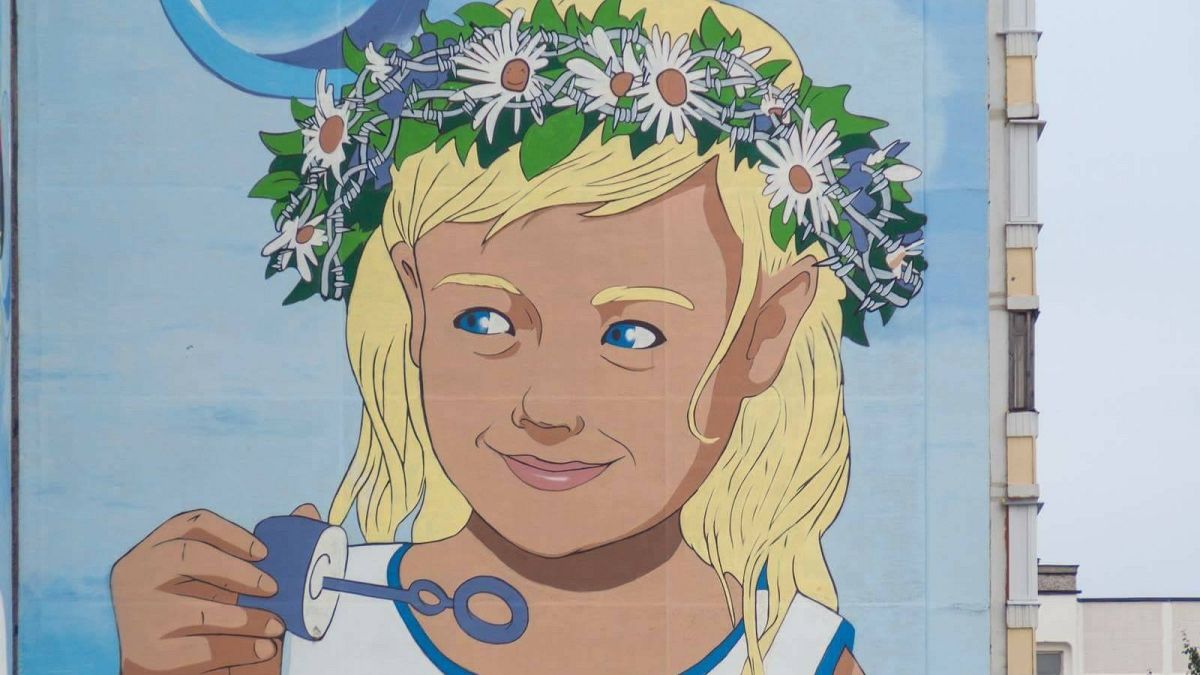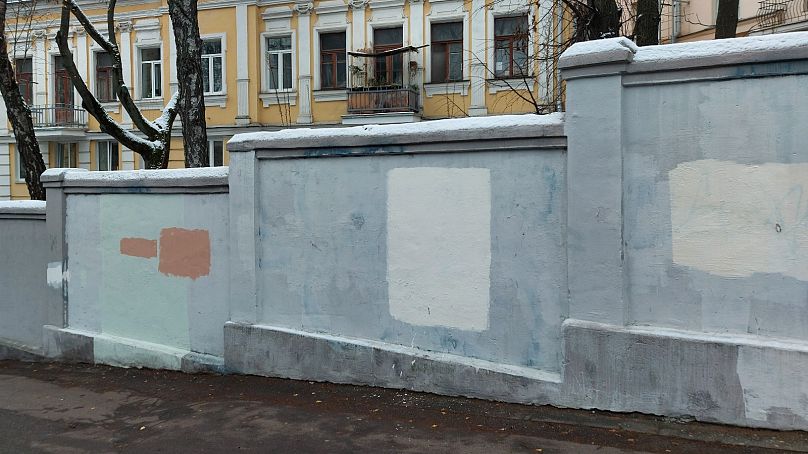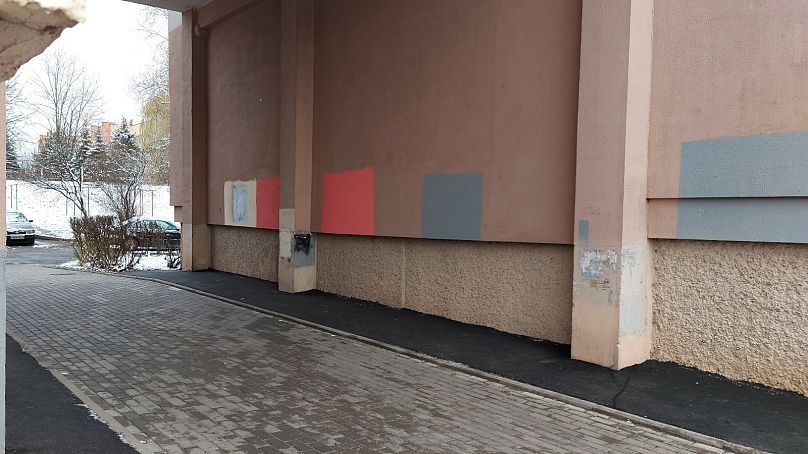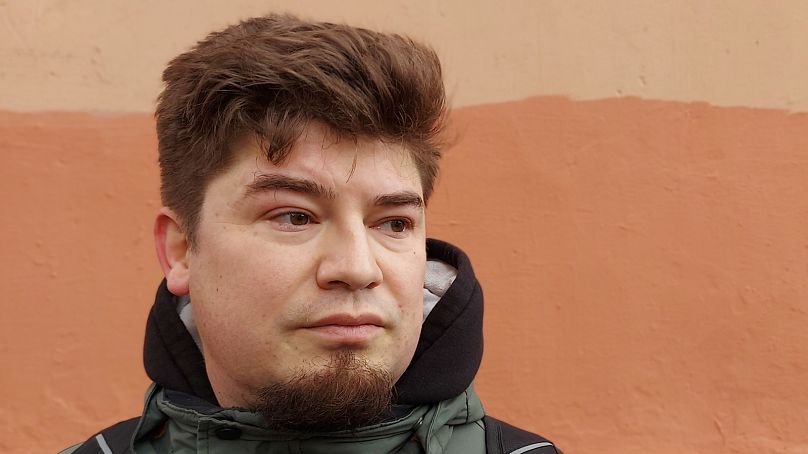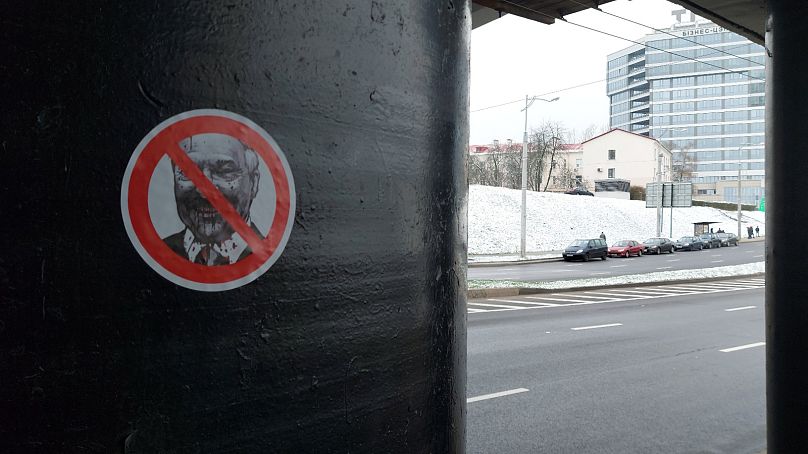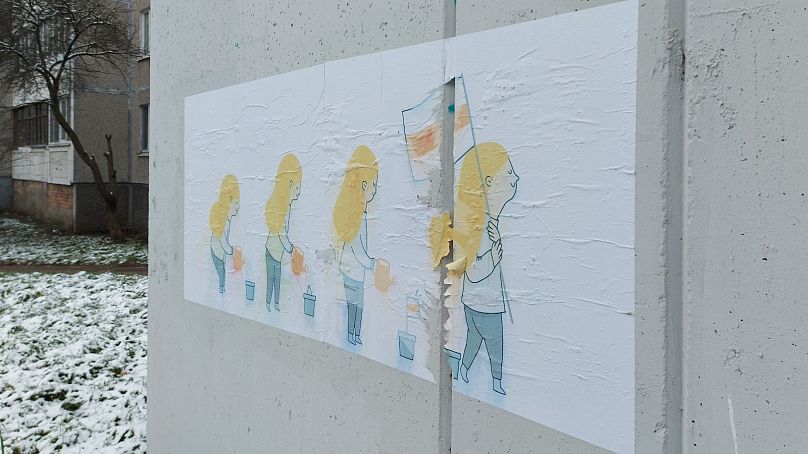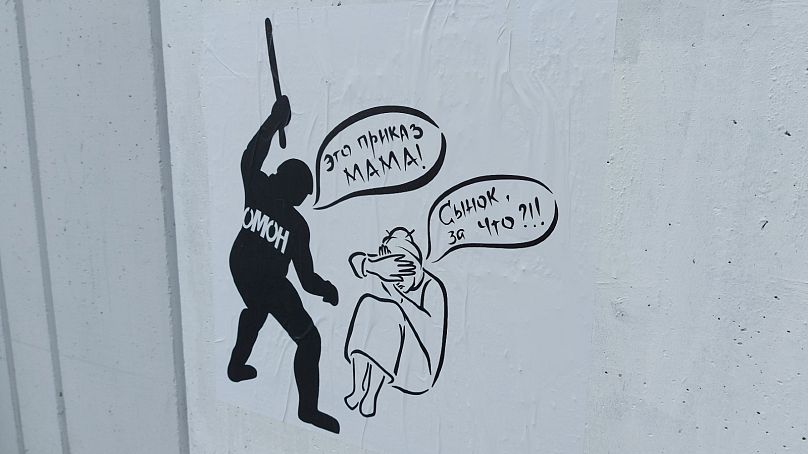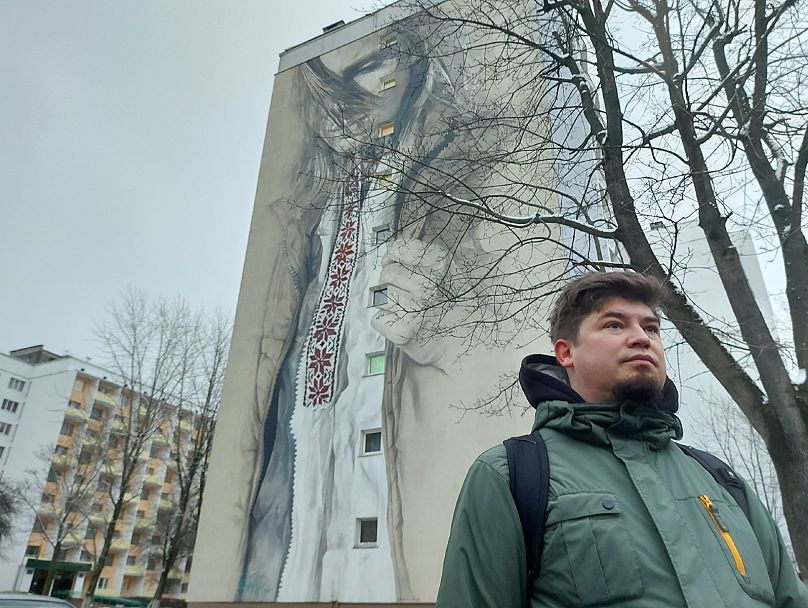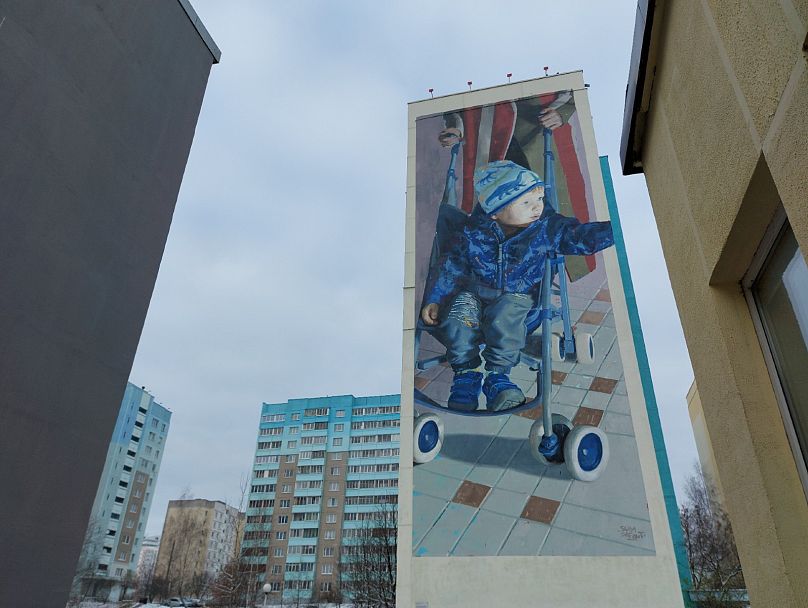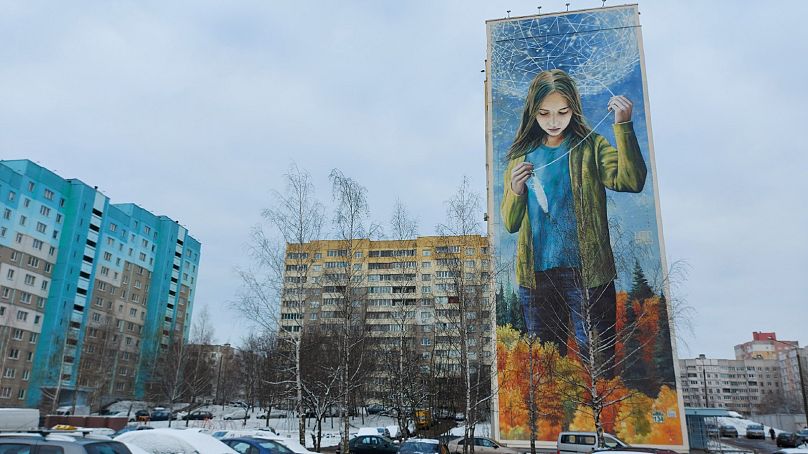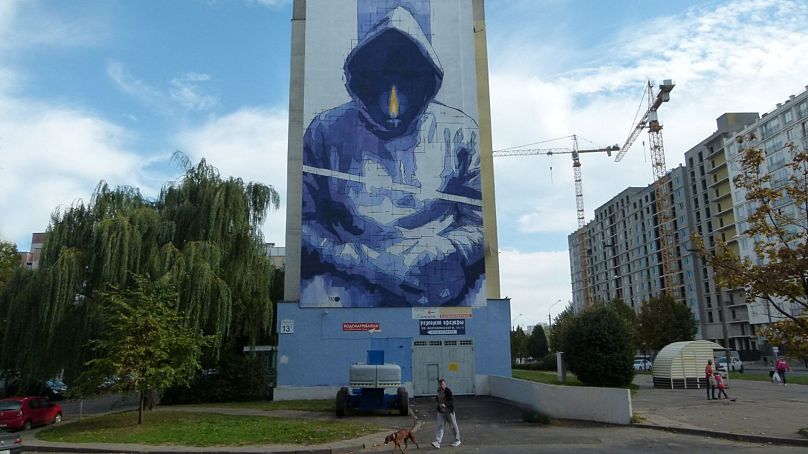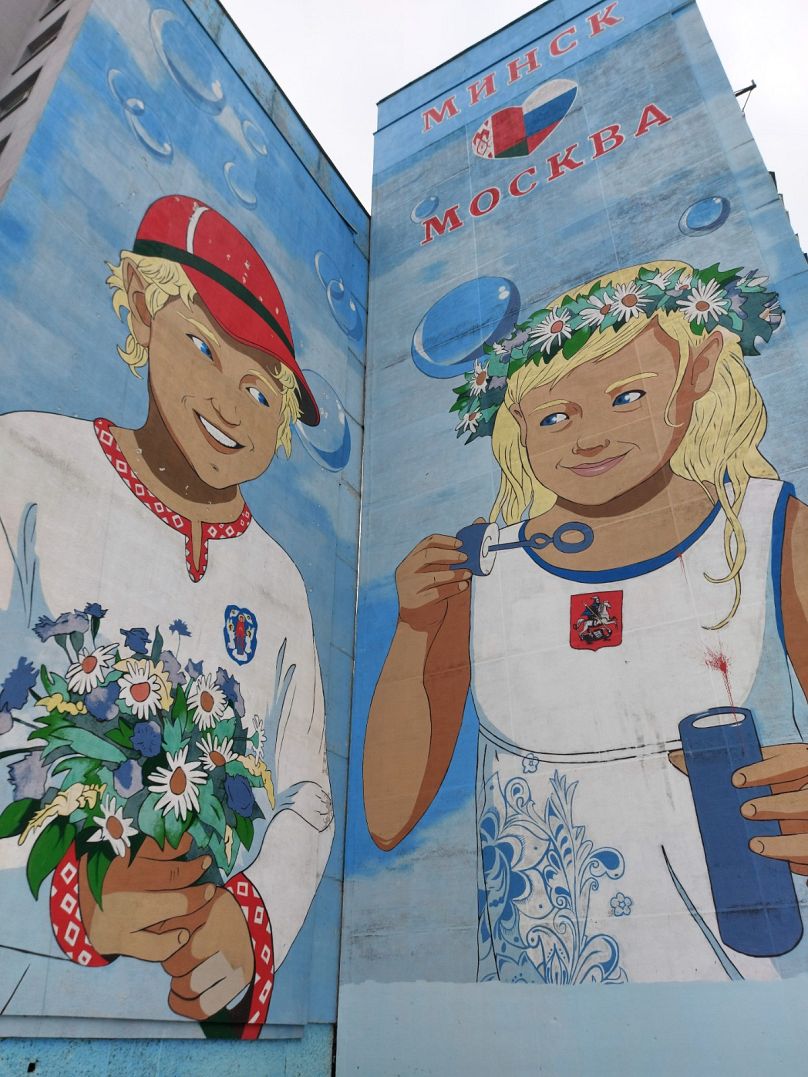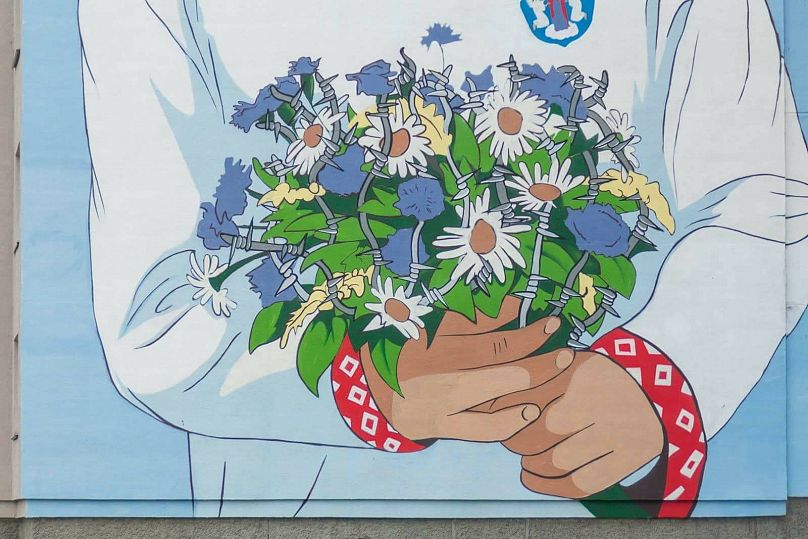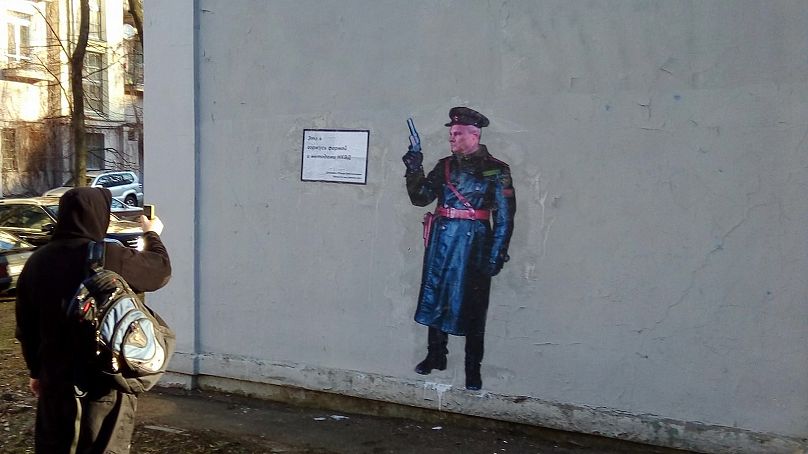They engage in a cat-and-mouse game with authorities who paint over their work often just hours after it's been created.
For more than four months, protesters and police have been facing off in Belarus as the fallout from a disputed election shows no sign of abating.
Demonstrators have protested since the August 9 presidential election which resulted in longtime strongman Alexander Lukashenko winning 80 per cent of the vote. The opposition says the election was rigged in his favour.
But, away from the main stage, a smaller, subtler game of cat-and-mouse is underway.
Each night street artists go out and paint an anti-government message. But, by the morning, authorities cover it up, only for the battle to repeat itself the following night.
Here one of Belarus' most prominent street artists, Aleh Larychau, 34, takes Euronews on a tour of Minsk's street art.
'Vast numbers of street artists have become politicised'
Street art has increased since the country's political crisis erupted in August yet has become a victim of authorities' efforts to suppress the opposition, artists say.
Many buildings have large brown, grey, or red squares painted on them, where there was once anti-government street art.
"We see that a vast number of designers, artists who were not previously involved in politics, are now politicised, working, so to speak, in protest," said Larychau, who is behind the well-known Signal Project, which has supported street artists since 2011.
"What is happening in Belarus now is a change of the times and in this process, the visual component is essential.
"Artists, photographers, designers create, broadcast the ideology that replaces the period of dictatorship.
"Modern people simply find it easier to perceive visual images than text. That is why the works of designers, illustrators, and street artists are very important today."
'If they detain me, I’ll sit and read books'
The crackdown on street art encompasses everything from large murals and classic graffiti to smaller pieces and simple images, according to Larychau.
The pieces are often removed after one or two days.
Larychau fears it could be just a matter of time before he gets arrested. Many artists have been forced to leave Belarus over the threat of detention. But Larychau says he has no plans to leave.
“I am an ideologist," he said. "The most important dream is that people can participate in the life of the country and independently shape their future. That is not like now, where someone decides for us,” he said.
“We are all used to the fact that the police can arrest everyone. Today you talk to a person, and then they [can] detain him tomorrow. If they detain me, I’ll sit and read books.
“I don't want to go anywhere. I have many friends who left, and they lose touch with reality; they live in a cloud of news - in the flow of information on the internet. They lose touch with living people.”
Larychau said he is also in contact with Lukashenko supporters so that he can understand their views.
In his opinion, not much separates Lukashenko supporters’ from the opposition. Both groups “want to live in Belarus” and share the dream of seeing the country develop.
As he sees it, it is the state that is trying to divide them.
'There is a great upsurge in society'
Today in Belarus, it is not only professional artists like Larychau, who are using street art to protest. Paintings, graffiti and visual art multiplied after the August election.
The government has removed much of it, but change is happening, which is hard to reverse, claims Larychau.
“Ordinary people themselves take our drawings or symbols and take it to the streets, to rallies and beyond. You don't have to draw yourself to go somewhere and glue something. There is a great upsurge in society, and a lot of people are ready to pick it up and do it,” he said.
Larychau started the Signal Project to get more people involved in street art but says there is now a newfound interest in it. The aim was to make people think about their future and hear something else apart from government propaganda and commercial adverts.
To accomplish a change in an authoritarian country such as Belarus where civil liberties are minimal, you need to work with the system to some extent, he added.
He took part in organising 13 large murals around Minsk. Some are still visible today and are considered controversial. He got governmental approval for them despite some of them having symbolism that does not align with the government. Among them is a picture of a woman wearing the red and white colours of the opposition.
Larychau told Euronews he often had to tell the government the murals had a different meaning or symbolism than they actually did. Often, he was able to get them approved.
"If you look closely and think about it, you will see what it wants to say with the colours. Later, when I spoke with officials, they claimed that we had put the red and white colours from the opposition in there as a flag, but I told them that it's just a traditional shirt," said Larychau, adding that getting the murals approved is always an "adventure".
There are examples of these murals throughout the city such as that of a boy in a stroller reaching out towards the future by the Spanish artist Slim Safont, a mural of a girl connected to modernity by the Belarusian artist Mutus, and one about a boy walking from the past into a better future by the Australian artist Fintan Magee.
All of them could be considered controversial.
Larychau's brush with the law
Another mural of a man holding a candle, symbolising hope for a better future was removed a couple of years ago. When it was being painted, Larychau and other artists told the authorities that it was dedicated to victims of all wars in Belarus, and they received approval.
Later, the government painted it over, when they realised that people interpreted it as hope for a better tomorrow. It symbolised a light in the darkness of the Belarusian regime, said Larychau.
Larychau has also taken part in projects not approved by the government, such as drawing barbed wire on an existing mural of friendship between Moscow and Belarus, which triggered a month-long investigation by a committee.
He says he avoided jail time but had to pay a heavy fine. On other occasions, he says unknown people have come to his place and beat him up. He cannot prove the government is behind it, but he believes that they are.
He has also participated in painting pictures of politicians and security forces over the years, which are highly controversial. Among them is a painting of Igor Shunevich, the previous head of the Ministry of Internal Affairs in Belarus, who is shown dressed in a Soviet interior ministry uniform.
That ministry, the NKVD, is highly controversial and refers back to the People's Commissariat for Internal Affairs of the Soviet Union which massacred thousands of political prisoners back in the 1930s and 1940s.
“We wrote: I am proud of the NKVD uniform and methods,” said Larychau and points out that the minister actually said that he was proud of the NKVD in an interview with Komsomolskaya Pravda, “but the minister got offended, and I was jailed just like that on the street and was tried for hooliganism several times. The police drew up fake protocols.”
In other drawings, Larychau has painted riot police with the words: "It is I who lead the dispersal of peaceful assemblies for your money."
'All of Belarus makes posters ... something has changed'
The street art is now beyond the government's control, Larychau says.
Every day people are drawing and bringing the work of artists, illustrators and designers onto the streets. It is more than he could have hoped for.
Now, the government is trying to freeze everything and bring it back under control.
“Therefore, any symbols about hope, about the germination of something new, they are now in opposition and illegal,” said Larychau, “But it is too late. The people are now forming an image of a new Belarus."
"When we started this, street art was not popular in Belarus at all. It was just a little graffiti and letters, but we said that ideas could be conveyed through street art. When we wanted to make a big mural on a wall for the first time, people were told that this is impossible in Belarus. Now even the state uses murals," he added. “Something has changed."
Every weekday at 1900 CET, Uncovering Europe brings you a European story that goes beyond the headlines. Download the Euronews app to get an alert for this and other breaking news. It's available on Apple and Android devices.
